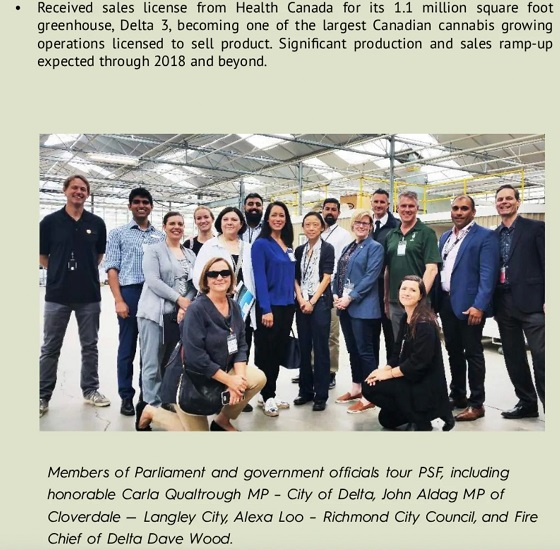Opinion
Meet The Disability Chat Crew

Bruce Dowbiggin
Is The Latest Tiger Woods’ Injury Also A Death Knell For PGA Champions Golf?

Tiger Woods should put an operating theatre in his Florida mansion on Jupiter Island. Woods has had a seventh surgery on his back. This time it’s to install a lumbar-disc replacement to address issues caused by a collapsed disc in his lower back. He’s expressing optimism that he could come back to play again, but there is no timeline.
The 15-time Major winner has always said he’ll never be a ceremonial golfer. So unless this surgery works miracles we have seen the last of him playing at golf’s top events. Says former PGA Tour player Johnson Wagner, “I just don’t see a world where we see him play in The Masters again — and that makes me very sad. I think his body is just beaten down, and I don’t think he can do it anymore.”
Since his days dominating the Tour ended Woods had expressed hope that he might add one more major— The U.S. Senior Championships— to his haul of 82 tournament wins. That seems a distant hope now as the 49-year-old looks unlikely to play in 2026 or 2027.
It’s also bad news for the PGA’s Champions Tour, where +50 former stars of the main Tour have extended their careers and made more prize money (Calgary hosts the Canadian stop.) The dream of what used to be called the Seniors Tour was to extend the visibility of the game’s drawing cards.
In the years after 1980, when the Seniors was established, the Tour did just that with star players such Tom Watson, Lee Trevino, Hale Irwin and Chi-Chi Rodriguez active. Along the way Fred Couples, John Daly, Ernie Els and more also won tournaments on the North American tour. Some used it to stay sharp for the U.S. and British Senior Opens. Others just enjoyed extending their careers while doing a little fishing.

But the great hope was that Woods and Phil Mickelson would highlight the Tour once their days on the regular Tour were done. Mickelson, however, has aligned himself with the rival LIV Tour, forgoing the PGA Champions.. That left Woods, the TV ratings magnet, to be the marquee attraction for the Tour. But that seems a faint hope now with this latest surgery. And the vast amount of money he’s already accumulated pounding these aging golfers into the turf.
Which has many in the know now suggesting the PGA Tour might just fold the Champions for good. While charisma-challenged Bernhard Langer has dominated the money-winners list well into his 60s, the star power of marquee names from the 1980s, ‘90s and 2000s has been sparse. Els, Retief Goosen, Stewart Cink and Padraig Harrington still compete and win. But a steady diet of Steve Alker, Richard Bland, Ken Tanigawa and Canada’s Stephen Ames leaves the viewing audience cold.

So could the Champions be reduced or eliminated? Without the promise of Woods teeing it up the future looks bleak. Nothing that happens in professional golf these days should surprise anyone, however. Since the arrival of the Saudi-sponsored LIV Tour stole a generation of stars such as Jon Rahm, Dustin Johnson, Brooks Koepka and Bryson DeChambeau the viewing public is baffled by what was traditionally a very stable lineup of tournaments from January through September.
There have been active negotiations the last two years between the LIV Tour and what remains of the PGA Tour, spearheaded by Rory McIlroy,. But so far no one has come up with a solution that puts golf’s Humpty Dumpty back together again. LIV has proven it can outspend the Tour if it comes to a spending contest so waiting for bankruptcy to return the LIV players to the PGA is a non-starter.
Fans are naturally disappointed and confused about the shifting picture. But as the rowdy Ryder Cup at NYC’s Beth Page Black demonstrated the sport can still command centre stage— even against an NFL weekend of games. The winning Europeans were demonized by hecklers and boors, adding a frisson of danger to the event.
It was must-see TV, even if it was rude. The geopolitical conflict reminded sponsors and networks of the potential for golf to once again capture the imagination of a global sports audience. If it just finds the right format.
Then there’s the Happy Gilmore factor. Adam Sandler’s second installment of the comedy series was a huge hit for Netflix with its blend of juvenile humour, celebrity cameos, golf greats, Bad Bunny and a flimsy plot about a futuristic tour involving Haley Joel Osment and supercharged golf course. Not much made sense beyond the appeal of golf. But non-golfers watched. (Owen Wilson’s series Stick has also been good story for golf.)
The plot inclusion of a rival league is a light-hearted jab at LIV— but also at the new TGL indoor competition that started last winter in Palm Beach Gardens, Florida. Fronted by Woods and featuring a number of current stars playing for various cities it has mechanical greens that rotate to mimic a real course and simulated holes on golf simulator.
Its biggest drawback is that the personalities of the Arnie/ Jack era half a century ago are largely missing from the men now dominating golf. Scotty Scheffler is affable. Tommy Fleetwood is modest. Justin Thomas has the charisma of a CPA. What the product needs are more Dalys and Shane Lowrys. But the fantastic purses they’ve earned have dulled the edge of golf’s legends post WW II.
For now, Woods will rehab, the sponsors will hold their breath and the audience will nod off on the couch till something reminds them of what they used to love.
Bruce Dowbiggin @dowbboy is the editor of Not The Public Broadcaster A two-time winner of the Gemini Award as Canada’s top television sports broadcaster, his new book Deal With It: The Trades That Stunned The NHL And Changed hockey is now available on Amazon. Inexact Science: The Six Most Compelling Draft Years In NHL History, his previous book with his son Evan, was voted the seventh-best professional hockey book of all time by bookauthority.org . His 2004 book Money Players was voted sixth best on the same list, and is available via brucedowbigginbooks.ca.
Business
“Modernization,” They Call It: How Ottawa Redefined Fraud as Progress

When 41% of contracts break their promises, the scandal isn’t the system, it’s the spin that keeps it alive.
The House of Commons Standing Committee on Government Operations and Estimates (OGGO) held an in-depth hearing on Tuesday examining federal contracting integrity and the growing problem of “bait and switch” tactics identified in government procurements.
Appearing before the committee were Procurement Ombudsman Alexander Jeglic and his Senior Risk Advisor, Kelly Kilrea, who briefed Members of Parliament on the findings of their office’s 2025 special report titled “Bait and Switch in Federal Contracting.” The study detailed how some companies have won multimillion-dollar federal contracts by proposing highly qualified personnel, only to replace them after the award with less experienced or lower-cost workers.
Over more than two hours of questioning, MPs from all major parties probed whether this pattern amounted to fraud, negligence, or systemic mismanagement within Public Services and Procurement Canada (PSPC) and other departments. The Ombudsman told MPs that, while not every case involved deliberate deceit, the practice was widespread and harmful, undermining competition and eroding public trust in how taxpayer funds are spent.
“When a supplier wins a contract based on the credentials of specific experts, and those experts never perform the work, that raises serious integrity concerns,” Jeglic said. “Even without intent to deceive, the result is that the government may not receive the value it contracted for.”
The OGGO committee launched this study to scrutinize both the Procurement Ombudsman’s mandate and the findings of his most recent review into staffing substitutions under federal professional services contracts — a longstanding issue that resurfaced during the ArriveCAN controversy.
The Bait and Switch report, released in early 2025, examined 17 federal procurement files across several departments and agencies. The review revealed that in 41 percent of cases, the individuals proposed in the winning bids did not end up performing any of the contracted work. In many instances, these replacements occurred without proper documentation or departmental justification.
The problem first came to light through the Ombudsman’s separate investigation into the federal government’s ArriveCAN application, where the same pattern appeared on an even larger scale. In that review, Jeglic found that 76 percent of personnel proposed in ArriveCAN-related contracts never actually worked on the project, a statistic he described as “shockingly high.”
These findings prompted the Ombudsman to launch a broader system-wide review of whether “bait and switch” staffing practices had become entrenched in the government’s procurement culture. The 2025 report defined the practice explicitly as a scenario in which:
“A supplier secures a federal contract by proposing named individuals with particular qualifications or experience, but after contract award, substitutes them for others with lesser qualifications, without appropriate authorization or justification.”
The report stopped short of labeling the issue as fraud, since establishing intent is outside the Ombudsman’s statutory authority. However, it warned that the recurring pattern “poses a significant risk to fairness, transparency, and value for money in federal procurement.”
Jeglic told the committee that the tools to prevent this behaviour, such as contractual clauses requiring prior approval for resource changes, already existed but were not being consistently applied or enforced across departments.
As the hearing unfolded, the room divided neatly along partisan lines. Conservatives pushed hardest on accountability and possible cover-ups; Bloc Québécois MPs drilled into transparency and budget failures; and Liberal members defended the department’s response and pressed for moderation.
Each exchange revealed a very different interpretation of what the Ombudsman’s “bait and switch” report really meant.
Opposition MPs Hammer Procurement
The opposition benches came armed with pointed questions — and a tone of disbelief — as members of the Conservative Party and Bloc Québécois used Tuesday’s OGGO hearing to expose what they called a culture of impunity inside Ottawa’s contracting system.
The target wasn’t just the bureaucrats. It was the entire structure that lets contractors quietly swap qualified experts for cheaper, inexperienced staff after the ink is dry — and a federal apparatus that, even after years of warnings, still can’t stop it.
Conservatives: “They Know They Can Get Away With It”
Conservative MP Jeremy Patzer led the charge. He zeroed in on the heart of the bait-and-switch problem — companies winning bids with top-tier résumés, then cutting corners once the contract is secured.
“They know they can do it, and they know they can get away with it,” Patzer said. “Even if it’s not overt fraud, it’s systemic.”
Patzer pressed Ombudsman Alexander Jeglic on why, after years of oversight reports, nothing seems to change. He pointed to Recommendation 2 of the report, which urged the government to require that any replacement personnel match or exceed the original qualifications.
Public Services and Procurement Canada (PSPC), he noted, disagreed with even that.
“Why would they push back on something that simple?” he asked.
Jeglic’s answer: the department didn’t reject the idea, only where it should be implemented. It wanted the rule in contract templates, not in the overarching master agreement.
That didn’t satisfy the Conservatives. To them, the details were bureaucratic cover. The point was accountability — and the lack of it.
Patzer pressed further: could Jeglic even declare a finding of fraud if he saw one?
“No,” the Ombudsman admitted. “If we identified possible fraud, it would go to the RCMP.”
The Conservative benches shook their heads. In other words, the watchdog can bark but can’t bite.
Later in the hearing, Patzer returned, arguing that when nearly half of all reviewed contracts fail to deliver the promised experts, “something in the system isn’t working.”
“Surely some of these come close to outright fraud,” he said.
Jeglic didn’t disagree. “That would be fair,” he said, explaining that while his office couldn’t prove intent, the red flags were clear.
Tamara Jansen: “Canadians Expect Honesty and They’re Not Getting It”
Conservative Tamara Jansen picked up where Patzer left off — with sharper language. She called the entire practice “outrageous,” saying Canadians expect that when the government signs a multi-million-dollar contract, it actually gets the experts it was promised.
“This is bait and switch, plain and simple,” she said. “It violates the trust of taxpayers.”
Jansen accused departments of replacing real accountability with “policy workarounds,” referring to PSPC’s decision to stop evaluating individual qualifications altogether and instead score bids based on a company’s corporate experience.
“So now we don’t even check who’s doing the work?” she asked. “How is that improving anything?”
Jeglic explained that the change shifted procurement from a task-based model — where individual expertise is evaluated — to a solutions-based model, which focuses on the company’s proposed outcome.
That didn’t calm Jansen.
“Canadians have seen what happens when contractors get too creative,” she shot back. “We get ballooning costs, missed deadlines, no accountability — and taxpayers footing the bill.”
Her tone captured what much of the opposition was thinking: this wasn’t a one-off. It was the same pattern that produced ArriveCAN — confusion, waste, and no one taking responsibility.
Harb Gill: “Who Told You to Delete It?”
Liberal ministers weren’t the only ones on the defensive. Conservative MP Harb Gill went straight for what he called “the censorship angle.”
He cited The Globe and Mail’s reporting that government officials had asked Jeglic to remove an entire section from the Bait and Switch report — specifically the part outlining the policy’s negative impacts on small and medium-sized businesses.
“Who asked you to take it out?” Gill demanded.
Jeglic confirmed that the request came from the department itself, formally and in writing.
“They believed it was speculative and out of scope,” he said. “We disagreed.”
Gill asked whether the Ombudsman had ever faced that before.
“It’s not common,” Jeglic admitted. “Departments often suggest revisions — but full redactions are rare.”
He added that his office refused to comply and instead published both the department’s objection and his own rebuttal — verbatim — in the final report.
That exchange crystallized the opposition’s broader complaint: the bureaucracy doesn’t want scrutiny. When oversight gets too close to home, the instinct is to redact, not reform.
Bloc Québécois: “No Guarantee of Value for Money”
From the Bloc, Marie-Hélène Gaudreau framed the problem differently — as a question of public trust and fiscal responsibility.
“Can we guarantee to Quebecers and Canadians that the government is getting value for its money?” she asked in French.
Jeglic’s response was blunt:
“There’s no guarantee.”
Gaudreau pressed him on whether his small, underfunded office — operating on the same budget for 17 years — could properly monitor billions in federal spending. Jeglic said no, acknowledging “deep frustration” over his inability to expand his team despite repeatedly requesting funds.
“We have works in the queue that cannot be pursued,” he said. “Everyone understands the need — but I’ve never been successful.”
For the Bloc, that failure wasn’t just bureaucratic, it was political. Ottawa was starving its own oversight office while spending tens of billions through opaque contracts.
Liberals Defend the Swamp and Call It “Progress”
When the opposition came armed with outrage, the Liberals countered with spin — recasting what the Ombudsman called “bait and switch” as modernization.
Liberal MP Vince Gasparro downplayed the findings, calling the use of subcontractors and resource swaps “a common practice” that should continue. He even pivoted to talking about artificial intelligence, suggesting AI could “modernize” procurement — a remarkable leap of faith given Ottawa’s recent tech debacles.
Pauline Racheford went further, calling the report “thorough” and even saying she enjoyed reading it. She objected to the term bait and switch itself, insisting she didn’t see deception. Jeglic politely reminded her the term was deliberate — after years of ignored warnings, it was meant to grab attention.
Finally, Jenna Sudds moved to clean up the record. She asked if it was improper for departments to request edits to the Ombudsman’s reports. Jeglic confirmed it wasn’t — though he noted PSPC had tried to delete a full section, which his office refused.
Through it all, the Liberal message was consistent: there’s no scandal, just “evolution.”
Don’t call it bait and switch call it modernization.
Don’t call it failure call it progress.
Final Thoughts
So which is it? Are they incompetent or something worse?
Because let’s be honest: what we just watched wasn’t accountability, it was choreography. The watchdog says the federal government awarded contracts based on résumés that turned out to be fiction — and the Liberals’ response? Relax, it’s modernization.
They didn’t deny it happened. They just changed the vocabulary.
“Bait and switch” becomes “solutions-based contracting.”
Fraud becomes “flexibility.”
Failure becomes “progress.”
And when the Ombudsman exposes it, they call that a “balanced report.”
This isn’t evolution. It’s evasion, the bureaucratic art of saying everything while admitting nothing. Ottawa has spent two decades building a system where no one is ever responsible for anything, and they’re proud of it.
And that’s not the worst part because here’s a government that claims to be obsessed with “cutting waste,” with “efficiency,” with “respecting taxpayers’ money.” But when the one man in Ottawa actually capable of finding the waste sits in front of them and says, we can’t do our job because you won’t fund us, they nod, thank him politely, and move on.
Alexander Jeglic didn’t sound like a man crying for a bigger office or fancier title. He sounded like a man trapped inside a machine that’s designed not to work. He’s reviewing billions of dollars in federal contracts every year—contracts the government can’t seem to manage—and his entire budget hasn’t gone up since 2008. Seventeen years of inflation, and zero increase. That’s not oversight. That’s sabotage.
He told MPs his office uncovered that in 41 percent of contracts, the people taxpayers were told were doing the work never did. Think about that. Four out of ten contracts you pay for aren’t being delivered by the people who won them. That’s not a rounding error. That’s systemic rot. And the department responsible didn’t just shrug it off—they tried to delete it from the report.
They wanted the section removed. Formally. In writing. Because it made them look bad. Jeglic refused. He published their demand right there in the report. That’s what real accountability looks like.
And what did the government do? Nothing. No apology. No investigation. No increase in resources to stop it from happening again. Instead, they changed the rules so they no longer have to count it. They call it “solutions‑based contracting.” Translation: don’t measure outcomes, just redefine success until failure disappears.
If this were merely incompetence, you could fix it with new people. But it’s not. It’s a system that rewards itself for not knowing. They spend billions through opaque networks of consultants and subcontractors, and when someone tries to trace where the money went, the funding dries up.
This government spends more on communications staff than the Ombudsman’s entire office budget. They have teams of people paid to tell you how transparent they are, and the one office that could prove it is being starved to death.
So no—this isn’t about efficiency. It’s about control. They don’t want the waste found because the waste is the system. It’s how friends get paid, how failures get buried, and how no one is ever accountable.
You can call that whatever you like. But when the watchdog’s leash keeps getting tighter while the thieves run free, you stop wondering whether it’s incompetence. Because by that point, you already know the answer.
-

 Courageous Discourse2 days ago
Courageous Discourse2 days agoNo Exit Wound – EITHER there was a very public “miracle” OR Charlie Kirk’s murder is not as it appears
-

 Business2 days ago
Business2 days agoEmission regulations harm Canadians in exchange for no environmental benefit
-

 Alberta2 days ago
Alberta2 days agoPetition threatens independent school funding in Alberta
-

 Business2 days ago
Business2 days agoQuebecers want feds to focus on illegal gun smuggling not gun confiscation
-

 National2 days ago
National2 days agoPolitically Connected Canadian Weed Sellers Push Back in B.C. Court, Seek Distance from Convicted Heroin Trafficker
-

 MAiD1 day ago
MAiD1 day agoDisabled Canadians increasingly under pressure to opt for euthanasia during routine doctor visits
-

 Business2 days ago
Business2 days agoCanada Revenue Agency found a way to hit “Worse Than Rock Bottom”
-

 Censorship Industrial Complex2 days ago
Censorship Industrial Complex2 days agoWho tries to silence free speech? Apparently who ever is in power.








